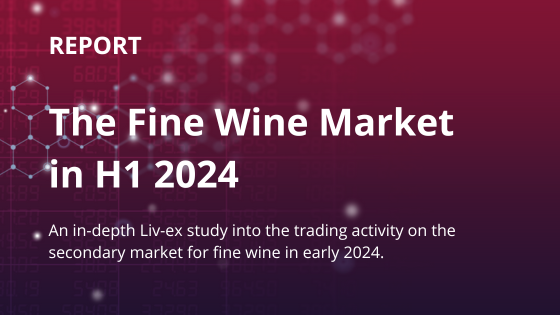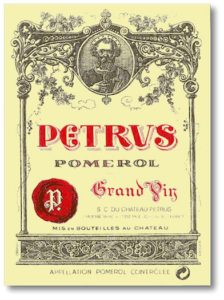
Owner: Moueix family
Appellation: Pomerol
Vineyard area: 11.3 hectares
Average annual production: 30,000 bottles p/a
Standard blend: 100% Merlot since the 2011 vintage
History
Since the end of the Second World War, the Loubat and Moueix families have lifted Petrus from obscurity and established it as one of Bordeaux’s most exclusive exports. The first record of the estate dates back to the early 19th century, at which time it was owned by the Arnaud family (who sold the wine as Petrus-Arnaud). Having won a gold medal at the Paris Exhibition of 1878, Petrus became one of the first wines from the unacclaimed but flourishing Pomerol appellation to sell at the price level of Classed Growth Medoc (albeit at the prices of the lesser growths).
The turn of the century saw the creation of La Societe Civile du Chateau Petrus, and in the decades that followed Madame Edmond Loubat – the owner of Hotel Loubat – gradually bought up shares in the company to become the sole owner by the late 1940s. Famous for her conviction that Petrus rivalled Bordeaux’s finest Crus, Madame Loubat upped the asking price and sold the wine through negociant Jean-Pierre Mouiex, with whom she formed a close partnership. Petrus’ renown spread from Europe to the US and it became a potent symbol of status and prestige.
Upon Madame Loubat’s death in 1961, Petrus was left to three beneficiaries: Moueix; her niece, Lily Lascoste-Loubat; and her nephew, Monsieur Lignac. Moueix acquired Lignac’s shares in 1964, and, some years later, bought out Madame Lacoste to gain full control of the property. Jean-Pierre passed away in 2003 but his family continues to produce wines of exceptional quality – and price.
Market performance
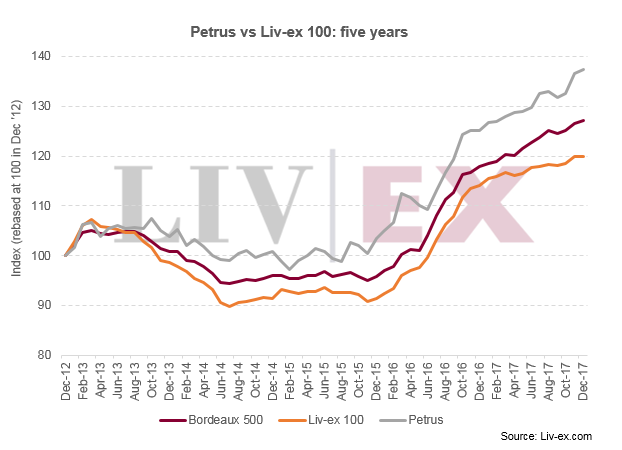
The Petrus index – which tracks the price movement of the last ten physical vintages – is up 37.4% over five years. It closely mirrors, but has outperformed, the Liv-ex 100 and the Bordeaux 500, which are up 19.9% and 27% over the same period.
Petrus ranked 10th in the 2017 Power 100, down from 8th place in 2016. The wine’s average trade price was £21,556, just behind DRC at £21,580.
The chart below shows the change in prices of Petrus for the last ten physical vintages. Over the past twelve months, the best-performing vintage has been the 2013, up 34.9%. The 2008 followed behind with a 16% increase.
The 2014 was the only vintage to fall in value: it dropped 2.6%.
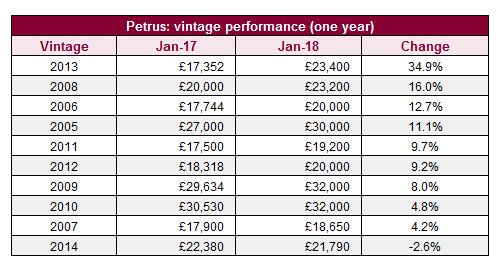
Critic scores
The chart below compares Petrus Market Prices against their Wine Advocate scores. There is a very clear difference in price between ‘on-vintages’ of Petrus – 2005, 2009, 2010, 2015 and 2016 – and those from ‘off years’. These ‘on’ vintages are priced in the range of £30,000-£34,000, while all the other recent physical vintages are below £23,400.
Buyers looking for value might consider the 2008 vintage (97 RP). It is currently available at a 22.6% discount to equally scored 2005.
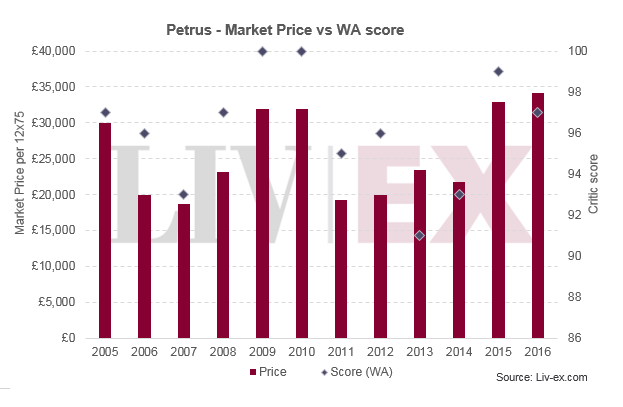
Prices for Petrus are 60.8% correlated to Wine Advocate score. When analysing current Market Prices for Petrus using Liv-ex’s ‘fair value methodology’, a number of vintages fall below the trend line.
The 2009 and 2010 stand out as wines offering relative value, based on their Wine Advocate scores.

Looking for more spotlights? Recently, Liv-ex featured an article on Armand Rousseau. To read the post, please click here.
[mc4wp_form id=”18204″]




